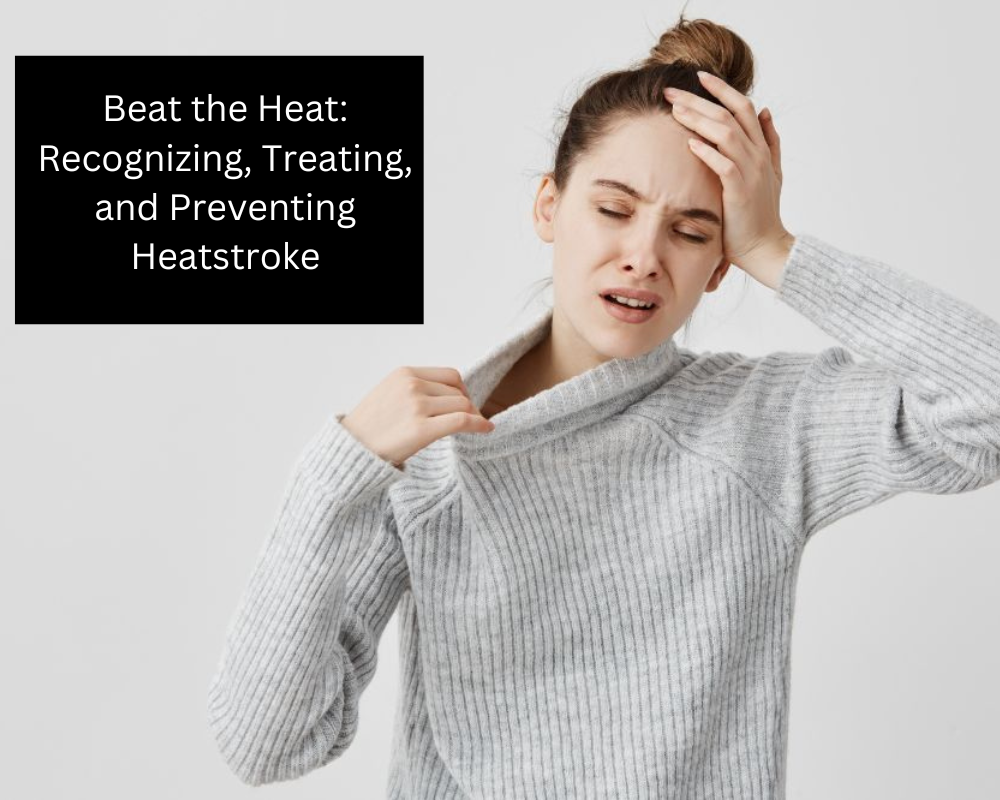Uncover the risks of heatstroke and gain knowledge on keeping yourself and your loved ones safe from this serious condition. We’ll walk you through the signs of heatstroke, provide crucial treatment measures, and offer indispensable prevention tricks. Don’t allow the hot weather to overpower you, stay well-informed and stay refreshed!
Heatstroke: A Medical Emergency
Prepare yourself for the dangers of heatstroke. This alarming condition occurs when your body loses its ability to regulate temperature and can quickly become life-threatening if ignored. When your internal temperature soars above 104°F (40°C), and your body’s cooling mechanisms fail to kick in, you’re in danger. Without prompt action, organ damage and even death can occur. Heatstroke is no joke – take it seriously.
What causes heatstroke?
Discover the ultimate recipe for heatstroke: a dangerous blend of scorching temperatures and suffocating humidity. When your body’s natural cool-down tactics, such as sweating, struggle to keep pace, chaos ensues.
Recognizing the Symptoms
Heatstroke can manifest in various ways. Pay attention to these warning signs:
- Nausea and vomiting
- Dizziness and headache
- Irritability or confusion
- Lack of sweating
If you or someone around you experiences these symptoms in a hot environment, it could be a heatstroke. Don’t ignore the signs.
Read: Get a Natural Glow with the Right Skin Brightening Serum
Act Fast: Steps to Take When Heatstroke Strikes
Immediate action is crucial when dealing with heatstroke. Don’t hesitate to seek professional medical help. Take these steps while waiting for assistance:
1. Move to a shaded area: Get out of the scorching sun and into a cooler space.
2. Remove excess clothing: Improve air circulation by loosening or removing unnecessary layers.
3. Cool the skin: Use any means available to lower the body temperature – cold water immersion, cool towels, or fanning.
4. Monitor temperature: Keep an eye on the person’s temperature until help arrives. Once it reaches around 101°F (38°C), stop cooling efforts.
Remember that only medical professionals can assess the situation and determine the next steps.
Treatment for Heatstroke
The key to treating heatstroke is lowering the body temperature rapidly. Medical professionals will move the individual to a cool environment, remove excess clothing, and employ cooling techniques like cold water immersion or cool towels. Vital signs will be monitored, and any necessary supportive care will be provided.
Prevent Heatstroke: Stay Cool and Be Safe
Don’t let the heat overtake you. Follow these prevention tips:
- Stay hydrated: Stay hydrated and refreshed throughout the day! Don’t wait until you feel thirsty to drink up. Opt for water or electrolyte-rich beverages to ensure your body stays properly hydrated.
- Dress right: Wear loose, lightweight, and light-colored clothing for better air circulation and sun reflection.
- Limit sun exposure: Avoid the hottest hours of the day – plan activities for before 10 a.m. or after 4 p.m.
- Take breaks and seek shade: If you’re active outdoors, rest in shaded areas to cool down.
- Use sunscreen: Protect your skin from harmful UV rays with high-SPF sunscreen.
- Never leave anyone in a parked vehicle: Even with cracked windows, car temperatures can skyrocket. Don’t put children, pets, or anyone else at risk.
Knowledge is power when it comes to heatstroke. Stay informed, stay cool, and stay safe.
Discover the Difference: Heatstroke vs. Heat Exhaustion
Learn the crucial distinctions between heatstroke and heat exhaustion to protect yourself and your loved ones. Heat exhaustion, while milder, can be a precursor to heatstroke. However, with the right steps, heat exhaustion can often be managed by seeking a cooler environment, staying hydrated, and resting.
Know the Possibilities: Can Heatstroke Occur in Moderate Temperatures?
While heatstroke is more commonly associated with extremely high temperatures, it can still occur in moderate conditions, especially when combined with high humidity and physical exertion.
Learn the Surprising Truth: Can Your Medications Put You at Risk of Heatstroke?
Specific medications can actually disrupt your body’s temperature control, boosting the chances of heatstroke. Keep an eye on medications that impact sweating, blood pressure, and even certain psychiatric drugs.
Discover the Timeline of Heatstroke: When Does It Strike?
Heatstroke onset can differ, influenced by factors like your own well-being, temperature, and humidity. Brace yourself, as it can strike in as little as a few hours of being exposed to scorching heat.
Don’t Underestimate the Dangers: Who’s at Risk for Heatstroke?
While heatstroke can affect anyone, certain factors increase susceptibility. Older individuals, young children, those with chronic illnesses, athletes, outdoor workers, and those taking medications that impact heat regulation are especially at risk.
Act Swiftly: Recognize, Seek Help, and Cool Down
Heatstroke is a serious medical emergency that demands immediate attention. Identifying the symptoms, reaching out for prompt medical assistance, and implementing effective cooling strategies can drastically improve outcomes. By understanding the risks and adopting preventive measures like staying hydrated and avoiding excessive heat exposure, heatstroke can often be avoided.
Experience peace of mind in a medical crisis, such as heatstroke. Trust the reliable and well-equipped emergency room in Kingwood, Texas. They are devoted to delivering exceptional emergency care, ensuring the well-being of our community.

